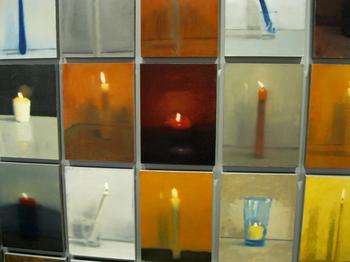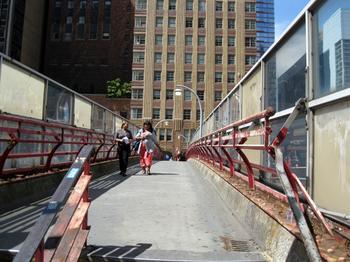The September 11 attacks destroyed 13 million square feet of office space in Lower Manhattan. That, and two recessions, led to a loss of 16,000 jobs south of Chambers Street, according to a report from the Alliance of Downtown New York. And yet the area has remained lively, as more and more people have chosen to make their homes there.
The decision to work or to live in the area hinged on many different factors.
In the aftermath, some companies shifted employees to other offices, while others went through mergers and downsizing in the years since. As to the residential side, even before the attacks, developers were converting old office buildings into apartments in Battery Park City and the Financial District. Since September 11, the federal government helped finance residential projects, such as the Liberty Bonds, to encourage people to stay and live in Lower Manhattan.
Here’s a look at two individuals, and how their calculations and decisions have made the Financial District less financial and more residential.
DANIEL CHUNG, CEO of Fred Alger Management
Daniel Chung was 39 and the senior analyst for the technology sector, on September 11, 2001. It was a post that, by his own reckoning, would not have put him close contention for the CEO’s position. But the company’s headquarters was on the 93rd floor of the North Tower. Alger’s chief executive, David Alger and many other top executives were killed in the attacks. Chung survived because he was at a meeting in Midtown that morning. As the most senior manager to survive, he was quickly made chief executive.
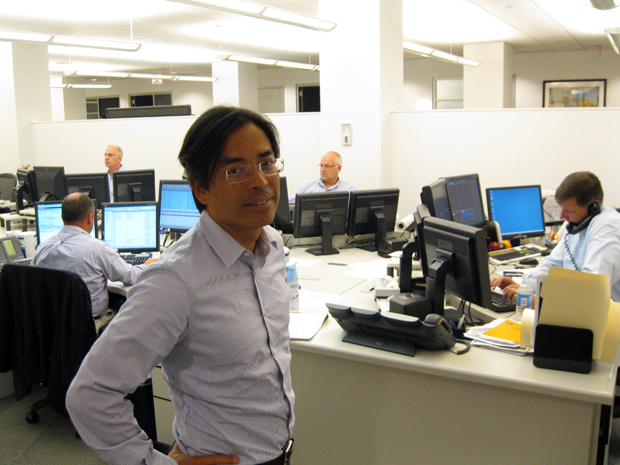 “We were one of the hardest hit firms, in terms of the percentage of people we lost,” Chung said. “Of the entire investment management team, there were only four of us who survived.”
“We were one of the hardest hit firms, in terms of the percentage of people we lost,” Chung said. “Of the entire investment management team, there were only four of us who survived.”
Chung considered moving the company back to Lower Manhattan, but rents, even in the dark days following September 11, were too high there. They were even higher in Midtown. So he settled on a turn-of-the century building at Fifth Avenue and 18th Street.
Photo Left: Daniel Chung at the offices of Fred Alger Management (Matthew Schuerman/WNYC)
“Union Square has always been a special place,” Chung said. “I thought it was a good area to be. It’s convenient to uptown and downtown. I also looked uptown, where many of our competitors were. But that was more than twice the cost of here, sometimes up to three times.”
In his haste to make sure the company survived, Chung didn’t have time to make interior design decisions, and asked the architects simply to replicate the chairs and carpet that were in their office in the World Trade Center.
But he did make one conscious decision: he took the second and third floors.
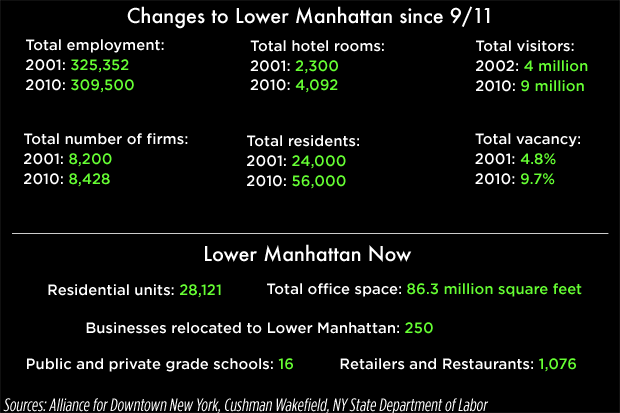
JOHN AN, Battery Park City resident
People feared that no one would want to live in Lower Manhattan after the September 11 attacks, but the opposite has happened. The residential population in that area has grown by about 22,275 people in the past decade, according to Census data. And the newcomers are overwhelmingly wealthy. In 2009, the Census estimated that the median households in six of the seven census tracts there earned more than $100,000 annually.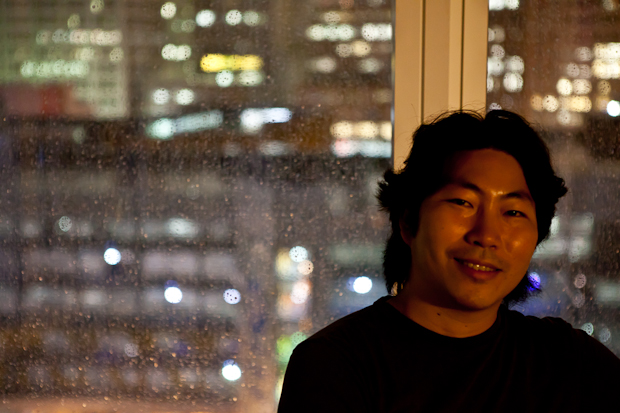
John An, an architectural consultant, moved into The Visionaire, a new high rise on Little West Street, with his wife two years ago, when they were expecting their first child. They wanted the open space that Battery Park City provided — and the convenience to all the subway lines that run through Lower Manhattan.
Photo Right: John An in The Visionaire (Stephen Nessen/WNYC)
“We both didn’t want to move out of Manhattan, and so this was our best kind of suburban option,” he said.
Even though his building is just a few blocks south of the World Trade Center, An says that he rarely associates his neighborhood with the terrorist attacks — except every September, when the Tribute in Light — the two illuminated columns that stretch into the sky — are set up on a garage just across West Street.
“I see how the community really comes together and celebrates or remembers these events,” An said. “That’s the aspect that really touches me a lot.”

